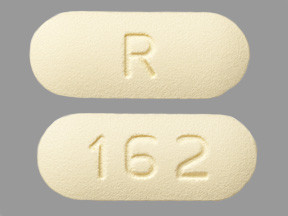OFLOXACIN - ORAL
PHONETIC PRONUNCIATION: (oh-FLOX-uh-sin)
COMMON BRAND NAME(S): Floxin
GENERIC NAME(S): ofloxacin
Uses
USES: This medication is used to treat a variety of bacterial infections. Ofloxacin belongs to a class of drugs called quinolone antibiotics. It works by stopping the growth of bacteria. This antibiotic treats only bacterial infections. It will not work for viral infections (such as common cold, flu). Using any antibiotic when it is not needed can cause it to not work for future infections.
How to use OFLOXACIN - ORAL
HOW TO USE: Read the Medication Guide provided by your pharmacist before you start taking ofloxacin and each time you get a refill. If you have any questions, ask your doctor or pharmacist. Take this medication by mouth with or without food as directed by your doctor, usually twice a day (every 12 hours). The dosage and length of treatment is based on your medical condition and response to treatment. Drink plenty of fluids while taking this medication unless your doctor tells you otherwise. Take this medication at least 2 hours before or 2 hours after taking other products that may bind to it, decreasing its effectiveness. Ask your pharmacist about the other products you take. Some examples include: quinapril, sucralfate, vitamins/minerals (including iron and zinc supplements), and products containing magnesium, aluminum, or calcium (such as antacids, didanosine solution, calcium supplements). For the best effect, take this antibiotic at evenly spaced times. To help you remember, take this medication at the same time(s) every day. Continue to take this medication until the full prescribed amount is finished, even if symptoms disappear after a few days. Stopping the medication too early may result in a return of the infection. Tell your doctor if your condition persists or worsens.
Side Effects
Precautions
Interactions
Overdose
Images
Reviews
Faq for OFLOXACIN - ORAL
Ofloxacin - oral is an antibiotic medication used to treat various bacterial infections, including those affecting the urinary tract, respiratory system, skin, and prostate gland.
Ofloxacin - oral should be taken exactly as prescribed by your doctor. It is usually taken twice daily with or without food. Make sure to finish the full course of medication, even if you start feeling better.
Common side effects of ofloxacin - oral may include nausea, vomiting, diarrhea, stomach upset, headache, dizziness, or skin rash. Contact your doctor if you experience severe side effects like tendon rupture, allergic reactions, or signs of liver problems.
It is recommended to avoid alcohol while taking ofloxacin - oral as it may increase the risk of certain side effects and decrease the effectiveness of the medication.
Certain medications, such as antacids, sucralfate, or iron or zinc supplements, may interfere with the absorption of ofloxacin - oral. It is advisable to separate the intake of these medications by at least 2 hours. Consult your doctor or pharmacist for a complete list of medications to avoid.
Ofloxacin - oral should only be used during pregnancy if absolutely necessary and under the guidance of a healthcare professional. It is not recommended during breastfeeding as it may pass into breast milk.
The effectiveness of ofloxacin - oral depends on the type and severity of the infection being treated. Improvement in symptoms is usually seen within a few days, but it is important to complete the full course as prescribed by your doctor.
Ofloxacin - oral is generally not recommended for children or adolescents under 18 years of age, as it may cause joint and tendon problems. Your doctor will determine if the benefits outweigh the potential risks.
If you miss a dose, take it as soon as you remember. However, if it is close to the time for your next dose, skip the missed dose and continue with your regular dosing schedule. Do not take a double dose to make up for a missed one.
Warning
WARNING: Quinolone antibiotics (including ofloxacin) may cause serious and possibly permanent tendon damage (such as tendonitis, tendon rupture), nerve problems in the arms and legs (peripheral neuropathy), and nervous system problems. Get medical help right away if you have any of the following symptoms: pain/numbness/burning/tingling/weakness in your arms/hands/legs/feet, changes in how you sense touch/pain/temperature/vibration/body position, severe/lasting headache, vision changes, shaking (tremors), seizures, mental/mood changes (such as agitation, anxiety, confusion, hallucinations, depression, rare thoughts of suicide). Tendon damage may occur during or after treatment with this medication. Stop exercising, rest, and get medical help right away if you develop joint/muscle/tendon pain or swelling. Your risk for tendon problems is greater if you are over 60 years of age, if you are taking corticosteroids (such as prednisone), or if you have a kidney, heart, or lung transplant. This medication may make a certain muscle condition (myasthenia gravis) worse. Tell your doctor right away if you have new or worsening muscle weakness (such as drooping eyelids, unsteady walk) or trouble breathing. Discuss the risks and benefits with your doctor before using this medication.
Disclaimer
IMPORTANT: HOW TO USE THIS INFORMATION: This is a summary and does NOT have all possible information about this product. This information does not assure that this product is safe, effective, or appropriate for you. This information is not individual medical advice and does not substitute for the advice of your health care professional. Always ask your health care professional for complete information about this product and your specific health needs.


No Reviews Yet